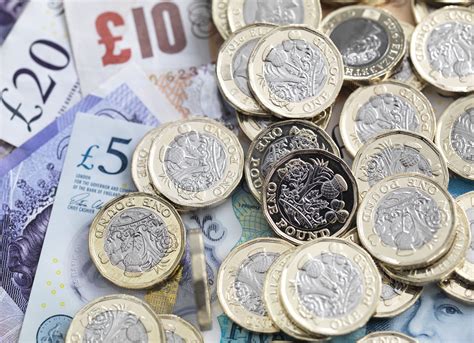Introduction

The United Kingdom pound sterling (GBP) and the United States dollar (USD) are two of the world’s most traded currencies, playing a significant role in global trade and financial markets. Understanding the exchange rate between these two currencies is crucial for businesses, investors, and individuals conducting cross-border transactions. This article provides a comprehensive guide to the UK pound to USD exchange rate, its historical performance, and forecasts for 2025 and beyond.
Historical Performance
Historically, the UK pound and USD have had a dynamic relationship, influenced by various economic, political, and global factors.
- 2000-2007: The pound strengthened against the USD, reaching a high of $1.99 in 2007 during the UK’s economic boom.
- 2008-2009: The global financial crisis weakened the pound, with the exchange rate falling to $1.40 in 2009.
- 2010-2015: The pound recovered against the USD, driven by UK’s improving economic fundamentals.
- 2016: Following the Brexit referendum, the pound plummeted to a 31-year low of $1.20.
- 2017-2020: The pound fluctuated between $1.25 and $1.35, influenced by Brexit negotiations and global economic uncertainty.
Current Status
As of March 2023, the UK pound is trading at around $1.20 against the USD. The exchange rate has been relatively stable in recent months amidst ongoing uncertainty over the UK’s post-Brexit economic prospects and the broader global economic outlook.
Factors Affecting the Exchange Rate
Numerous factors influence the UK pound to USD exchange rate:
- Interest Rates: Central bank interest rate differentials can drive currency movements, especially during periods of monetary policy changes.
- Inflation: Inflation rates in the UK relative to the US affect the purchasing power of the currencies and can impact the demand for them.
- Economic Growth: The performance of the UK economy compared to the US influences the confidence in the pound and affects investor sentiment.
- Political Events: Political events, such as elections and Brexit negotiations, can create uncertainty and influence currency exchange rates.
- Global Economic Conditions: Global economic conditions, including growth, inflation, and geopolitical risks, can impact currency demand and affect the UK pound to USD exchange rate.
2025 Forecasts and Outlook
Forecasting exchange rates is inherently uncertain; however, analysts have provided estimates for the UK pound to USD exchange rate in 2025:
- Citibank: $1.25
- ING: $1.30
- UBS: $1.35
These forecasts consider factors such as the UK’s economic recovery post-pandemic, the ongoing Brexit negotiations, and the global economic outlook.
Tips and Tricks
- Use a Currency Converter: Online and mobile apps provide real-time currency conversion rates to facilitate accurate calculations.
- Fix the Exchange Rate: Consider using a forward contract or currency option to fix the exchange rate for future transactions, protecting against currency fluctuations.
- Shop Around for the Best Rates: Compare exchange rates from multiple banks and online providers to secure the most favorable terms.
- Monitor Currency Trends: Stay informed about economic and political events that may impact the UK pound to USD exchange rate.
- Consider the Long-Term: When making significant cross-border transactions, consider the potential impact of exchange rate fluctuations and plan accordingly.
Pros and Cons
Pros of a Strong Pound:
- Increased purchasing power for UK residents traveling or importing goods from the US.
- Higher returns on investments denominated in USD.
- Potential for job creation in export-oriented industries.
Cons of a Strong Pound:
- Reduced competitiveness for UK exporters, leading to potential job losses.
- Lower returns on investments denominated in GBP.
- Increased costs for tourism and businesses importing goods from the US.
Pros of a Weak Pound:
- Boosted competitiveness for UK exporters, leading to potential job growth.
- Increased returns on investments denominated in GBP.
- Lower costs for tourism and businesses importing goods from the US.
Cons of a Weak Pound:
- Reduced purchasing power for UK residents traveling or importing goods from the US.
- Higher returns on investments denominated in USD.
- Potential for inflation if imported goods become more expensive.
Highlights
- The UK pound to USD exchange rate has historically been volatile, influenced by economic, political, and global factors.
- The pound has fluctuated between $1.20 and $1.35 in recent years amidst ongoing Brexit negotiations and global economic uncertainty.
- Analysts forecast a moderate recovery of the pound against the USD in 2025, with estimates ranging from $1.25 to $1.35.
- Tips and tricks exist to optimize currency transactions and manage exchange rate risks.
- Understanding the pros and cons of a strong or weak pound can help decision-making for businesses and individuals.
Conclusion
The UK pound to USD exchange rate is a dynamic and multifaceted aspect of global financial markets. By understanding the historical performance, current factors, and future forecasts, businesses and individuals can make informed decisions and navigate cross-border transactions effectively. The tips and tricks provided in this article can further assist in optimizing currency conversions and managing exchange rate risks.



